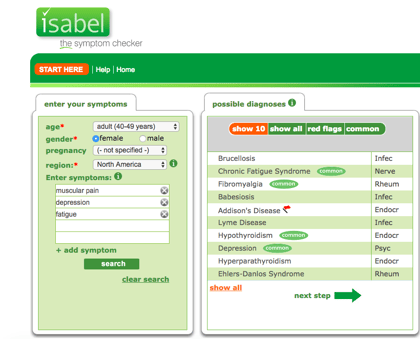- Privacy Policy
- Terms & Conditions
- Contact us
- ©Isabel Healthcare 2025
Spotlight on Alan Turing - Father of Artificial Intelligence
 A few months ago we published a blog on Artificial Intelligence (AI) and its adaptation to healthcare, but the origins of AI are often overlooked or not known. Alan Turing wasn’t well known during his lifetime but today is he is renowned for having been an eccentric and passionate British mathematician, and, thanks to the Oscar nominated film “The Imitation Game,” many people know of his contributions to World War II (WWII). With his highly intelligent and analytical mind, Turing developed the machine which played a crucial part in the Allied victory over Germany in World War 2 (WW2) and is credited with reducing the length of the war by 2 years. In doing so, he was actually conceiving modern computing as far back as the early 1940’s, and he is now viewed as the founding father of AI.
A few months ago we published a blog on Artificial Intelligence (AI) and its adaptation to healthcare, but the origins of AI are often overlooked or not known. Alan Turing wasn’t well known during his lifetime but today is he is renowned for having been an eccentric and passionate British mathematician, and, thanks to the Oscar nominated film “The Imitation Game,” many people know of his contributions to World War II (WWII). With his highly intelligent and analytical mind, Turing developed the machine which played a crucial part in the Allied victory over Germany in World War 2 (WW2) and is credited with reducing the length of the war by 2 years. In doing so, he was actually conceiving modern computing as far back as the early 1940’s, and he is now viewed as the founding father of AI.
Early Life
Alan Turing was born on June 23rd in 1912 in Maida Vale, London. At an early age he displayed signs of high intelligence recognized by his teachers. He spent much of his early life separated from his parents as his father worked in the British administration of India and therefore he went to the Independent boarding Sherborne School as a teenager. Here he displayed a keen interest in maths and science, and once he had completed his schooling he enrolled at King’s College in Cambridge from 1931 to 1934, where he proved the central limit theorem and thus became a fellow upon graduation.
The Turing Machine
In 1936, Turing wrote a paper on “Computable Numbers with an application to the Entscheidungsproblem,” which encompassed the notion of a universal machine that could decode and perform any set of instructions. The central concept within this paper was the modern computer we use today and the paper is now recognised as the foundation of computer science. Turing then went to the Institute of Advanced Study in Princeton, New Jersey for two years where he studied mathematics and cryptology, setting the foundations for his work during the war.
Turing’s Impact in WW2
In 1938, Turing returned to Britain and took up a place with the Government Code and Cypher School which was a code breaking organization. In July 1939, the Polish Cipher Bureau passed on crucial information about the Enigma machine which the Germans were using to encipher all its military and naval signals. At the beginning of September 1939, Alan Turing took up residence at Bletchley Park in Buckinghamshire, which served as the secret wartime HQ of Britain’s top codebreakers, to try and crack the Enigma code. The Germans transmitted many thousands of coded messages each day during WW2, containing detailed situation reports, top level signals and orders signed by Hitler himself. Turing rapidly developed a new machine which became known as the ‘Bombe’ which was capable of breaking these Enigma messages on an industrial scale. The faster the messages could be broken, the fresher the intelligence that they contained, which in turn allowed Britain and her Allies to keep ahead in the war. Turing Bombe machines turned Bletchley Park into a codebreaking factory, and by 1943 Turing’s machines were cracking 84,000 Enigma messages each month, which is equivalent to two messages a minute.
In 1942, the Germans were using a more sophisticated German cipher machine which became known as the Tunny. The Tunny teleprinter communications network was a harbinger of today’s mobile phone networks. Turing developed the first systematic method known as “Turingery” to break the Tunny messages, which gave more detailed knowledge of German strategy information and changed the course of WW2. It is a widely held thought that Bletchley Park’s massive codebreaking operation shortened the war in Europe by between 2 to 4 years, and helped Britain win. Turing stands alongside Churchill and Eisenhower as leading figures who secured the Allied victory over Hitler.

Alan Turing Memorial – Bletchley Park, Buckinghamshire
The Turing Test and the Advent of Artificial Intelligence (AI)
During March 1946, Turing developed a detailed design for what was called the Automatic Computing Engine (ACE). This was a digital computer in the modern sense which stored programs in its memory. In 1950, Turing moved to the University of Manchester where he focused on the use of computers. The central theme he had been investigating was the power of a computer to rival human thought. In 1950, he published a paper including the idea of an ‘imitation game’ for comparing human and machine outputs which is now called the ‘Turing Test’. Turing was grabbling with the question “Can machines think?” This paper remains his best known work and was a key contribution to the field of AI, with some machines still undergoing the Turing Test to develop them.
Turing, who was homosexual, committed suicide in 1954 after being convicted of gross indecency. He was recently pardoned in 2013. Turing never got to see how AI and the theories he researched developed over the years, but he would be excited by the remarkable progress of AI since the 1950’s. It is found in many areas of industry from robots investigating climate change to computers working with the world’s finances. It is used in chess games to defeat world champions or through game shows like Jeopardy. The Isabel engine which is at the heart of Isabel PRO and the Isabel Symptom Checker has been developed using AI working in the background alongside humans to search a large database of evidenced based medicine in order for symptoms and lab tests to be researched and a list of possible diagnoses to be compiled. The diagnoses can then be reviewed by the Clinician and decisions made on further testing and treatment taken by the Clinician. The adaptations for AI are wide and it is fantastic to see AI being used within healthcare to aid clinical decision support. Who knows where the next 50 years will take us and how much more AI will become ingrained in our everyday lives and what new adaptations will be found for it.
Notable Quotes from Alan Turing on AI
- “I believe that at the end of the century the use of words and general educated opinion will have altered so much that one will be able to speak of machines thinking without expecting to be contradicted.”
Alan Turing, Computing machinery and intelligence - “The original question, 'Can machines think?' I believe to be too meaningless to deserve discussion.”
Alan Turing, Mechanical Intelligence: Collected Works of A.M. Turing - “The isolated man does not develop any intellectual power. It is necessary for him to be immersed in an environment of other men, whose techniques he absorbs during the first twenty years of his life. He may then perhaps do a little research of his own and make a very few discoveries which are passed on to other men. From this point of view, the search for new techniques must be regarded as carried out by the human community as a whole, rather than by individuals.”
- “Those who can imagine anything, can create the impossible.”
- "A computer would deserve to be called intelligent if it could deceive a human into believing that it was human."
Enjoyed this blogpost? Why not subscribe to get regular updates when we post on the Isabel Blog?

Mandy Tomlinson
Mandy has worked for Isabel Healthcare since 2000. Prior to this, she was a Senior Staff Nurse on the Pediatric Infectious disease ward and high dependency unit at one of London's top hospitals, St Mary’s in Paddington which is part of Imperial College Healthcare NHS Trust. Her experience in the healthcare industry for the past 33 years in both the UK and USA means she's a vital resource for our organization. Mandy currently lives and works in Scottsdale, Arizona.
Subscribe Here!
Recent Posts
Isabel DDx Companion with ChatGPT Integration - to help you diagnose even faster
At Isabel Healthcare, we’ve always been driven by one goal: to make clinical reasoning faster,..Virtual Triage: Do more questions lead to better patient outcomes?
One of the common misconceptions related to virtual triage / symptom checker tools is that the more..List Of Categories
- Differential Diagnosis Decision Support
- Differential diagnosis
- Symptom Checker
- Symptoms
- Medical Error
- Patient Disease Information
- Disease
- Clinical Decision Support
- Diagnostic Decision Support
- Isabel 1 Minute Read
- Diagnosis Error
- Diagnosis Skills Cases
- Healthcare Informatics
- Clinical Reasoning
- Evidence-based Medicine
- Medical Education
- Patient Engagement
- Symptom Triage
- Nurse Practitioner Education
- Nursing Decision Support
- Partnership
- Public Health
- COVID-19
- EHR
- Patient Empowerment
- Patient Safety
- rare disease

Start your FREE Trial today
Try the Isabel Pro DDx generator for 30-days - no payment card details required.




